5 ways employers use virtual reality for training
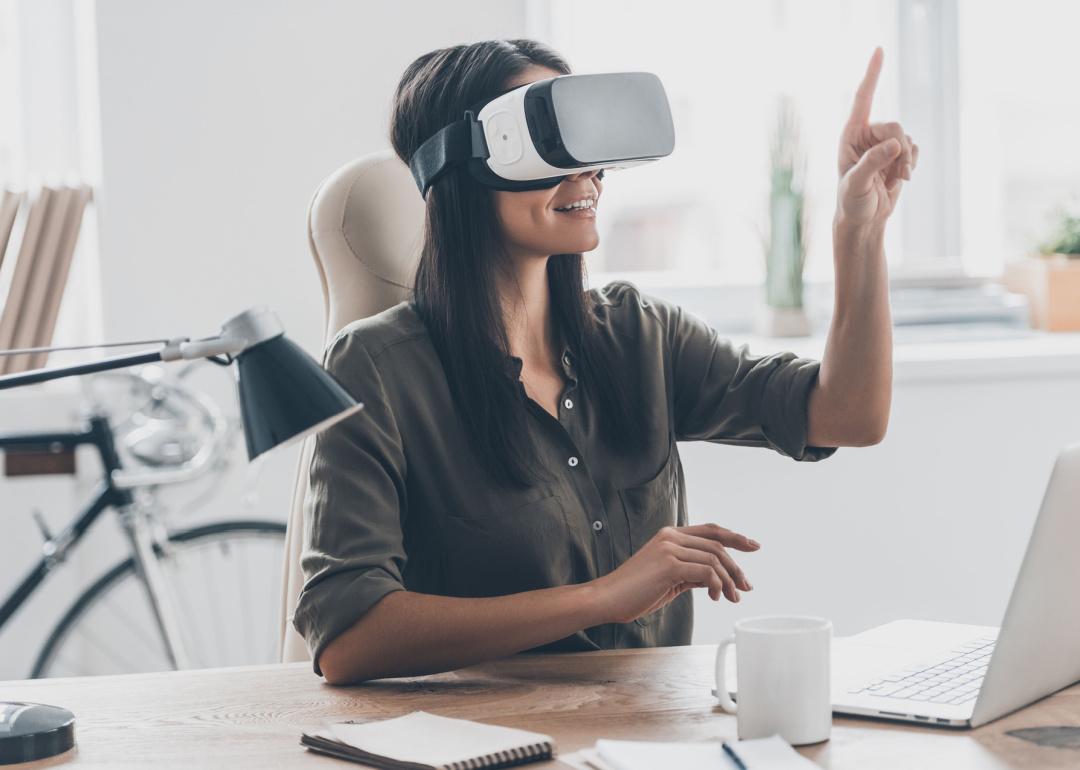
G-Stock Studio // Shutterstock
5 ways employers use virtual reality for training
woman in virtual reality headset sits at desk in office
Immersive technology, which blends digital content with the physical world, is a quickly expanding market encompassing a few different technologies. “Virtual reality,” among the most well-known forms of immersive technology, engages individuals in a 3D, fully digital world using headsets. In contrast, “augmented reality” expands the real world by layering virtual objects using glasses, smartphones, or tablets. “Mixed reality” takes AR a step further by allowing users to interact with those virtual objects.
While the entertainment industry has long-utilized immersive technology, many others have also adopted it to train staff. Tovuti LMS researched how employers in different industries use immersive technology to train employees.
Projections foresee businesses buying 2.6 million VR and AR headsets by the time 2022 ends, marking a 30% increase over 2021. This technology appeals to some businesses because it allows them to tailor training content and pace to the individual. It also lets employees practice skills independently—and even make mistakes—in a way that is not always feasible or safe in the real world.
Read on to learn how this technology is applied to teach various professional and technical skills.
![]()
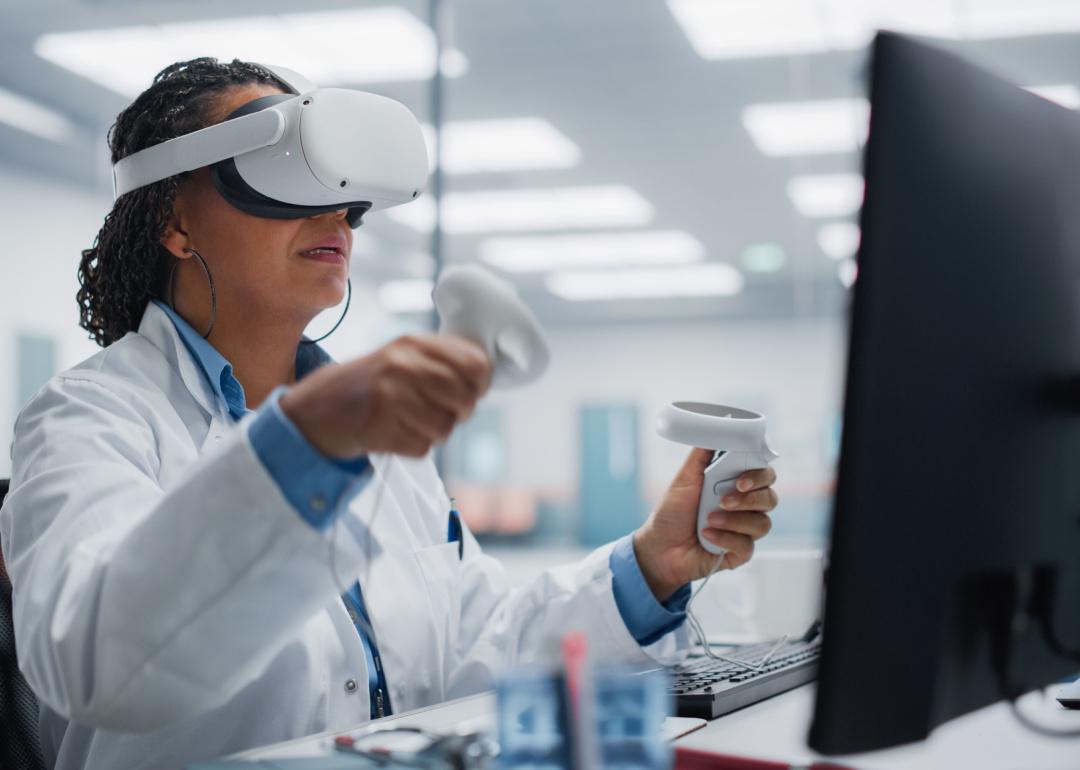
Gorodenkoff // Shutterstock
Surgical and medical skills
Female neurosurgeon wearing virtual reality headset uses controllers
Many universities and medical schools now use VR, AR, and MR as safe and cost-effective ways to train health care professionals. The American Board of Internal Medicine encourages the use of VR training before residents perform surgical interventions on actual patients. This training approach allows residents to practice skills as often as necessary, leading to greater competence and effectiveness.
Emergency responders at the Ohio State University College of Medicine, for example, use VR to learn how to triage patients, while those at the University of Miami’s Miller School of Medicine practice treating trauma patients who have suffered heart attacks or gunshot wounds. Educators teach medical residents at UConn Health orthopedic surgical procedures using VR. And the World Health Organization even uses AR to train health care workers treating COVID-19.
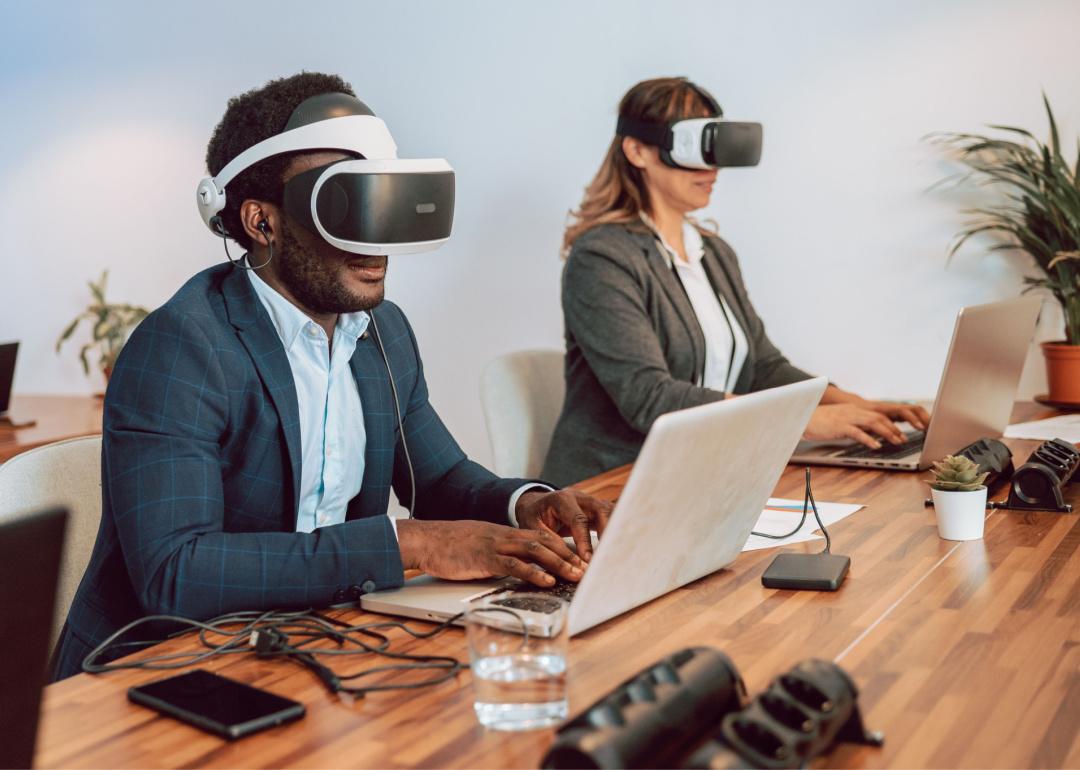
StockCanarias // Shutterstock
Customer service
Two office workers with virtual reality headsets working at table
Customer service training can be more effective using VR, as it engages employees in realistic situations and can be completed more quickly at their convenience.
H&R Block uses VR to teach customer service skills to call center employees. This technology allows staff to practice resolving customer problems and role-play staying calm during difficult conversations. The company reported that training their employees with VR helped cut the number of dissatisfied customers in half, and 70% of employees preferred this new approach over traditional training.
Walmart also uses VR-based customer service training, which includes an emphasis on empathy. The company reports positive outcomes from this method, including higher employee retention, improved employee confidence, and a 10-15% increase in training test scores.
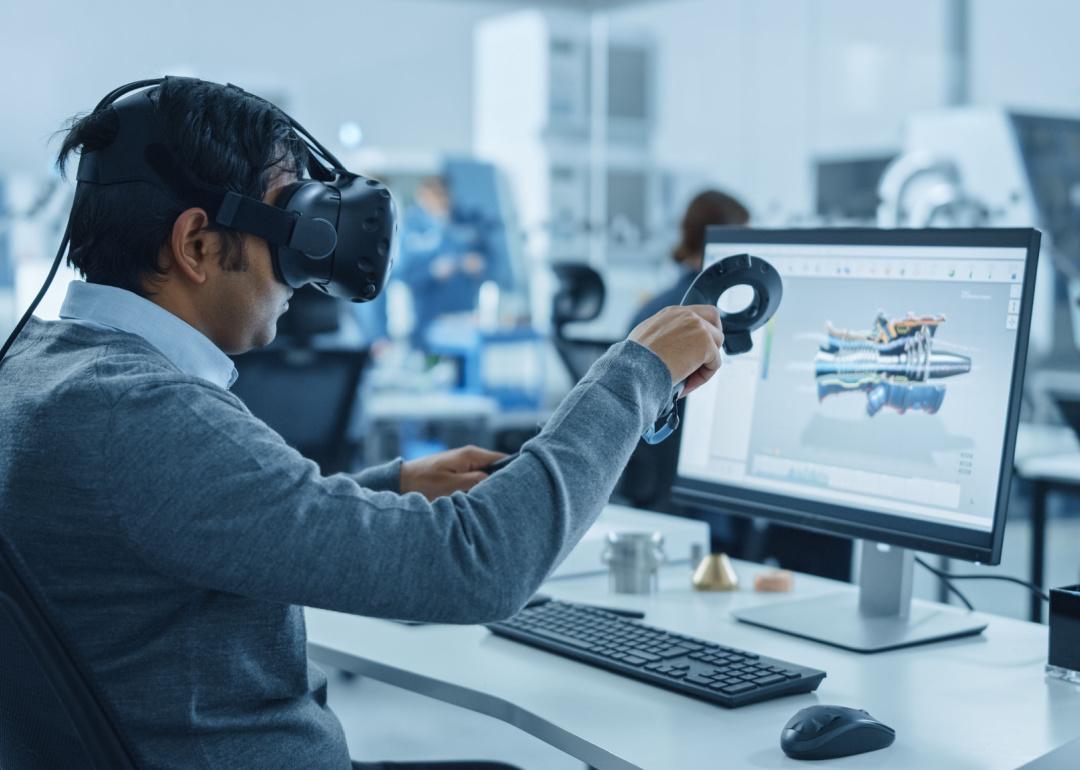
Gorodenkoff // Shutterstock
Technical skills
Mechanical engineer wearing virtual reality headset
Skilled trade workers have used immersive training through companies like Interplay, which developed a platform of online and VR training for various trades. Hands-on learning experiences are available for specialty areas such as electrical, HVAC, and plumbing. Learning modules include practice diagnosing and resolving common issues workers will face in the field, step-by-step guides, and quizzes to test comprehension.
The use of VR training grew significantly during the COVID-19 pandemic, with Interplay reporting a 445% increase in 2020. Renton Technical College is one school that started using AR and VR in its automotive program during the pandemic. Simulations of core skills, such as changing a car’s oil or brakes, were found to be more beneficial than having students read about these processes in a book.
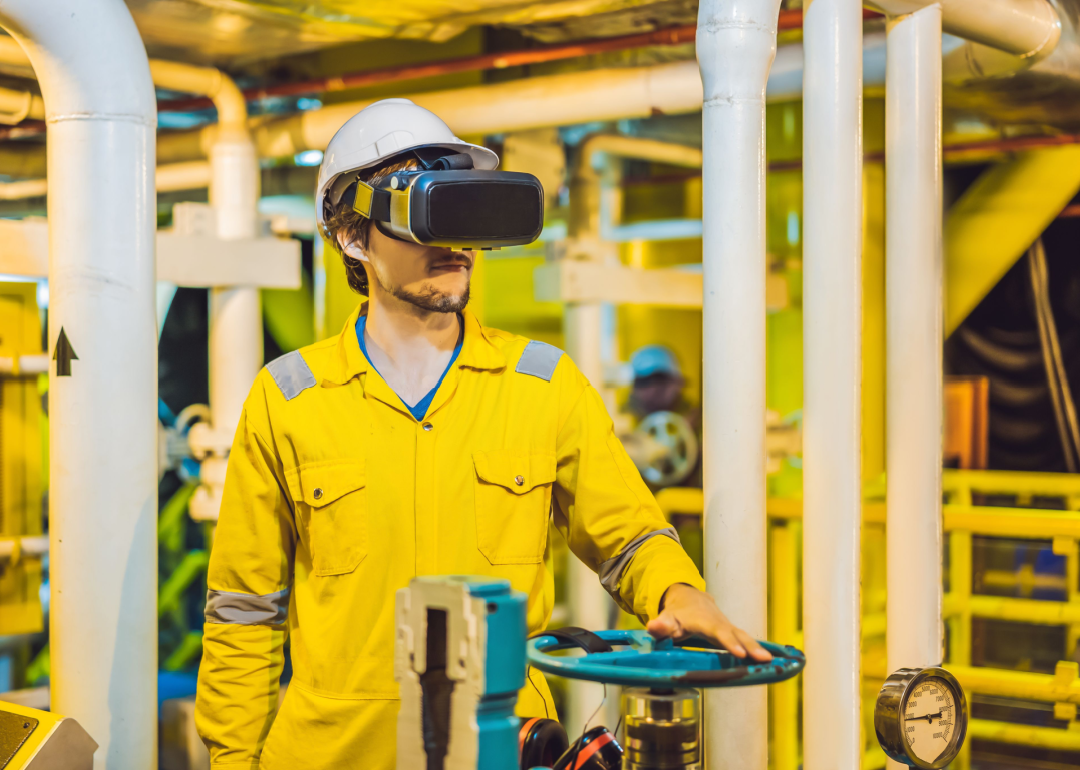
Elizaveta Galitckaia // Shutterstock
Safety in oil and gas facilities
Person wearing virtual reality glasses in industrial environment
Oil and gas companies use VR training to introduce staff to new facilities, such as refineries and offshore platforms, allowing them to safely explore these settings via a virtual environment. As with trade industries, VR use in oil and gas training increased during the COVID-19 pandemic due to the need to work remotely. Still, companies like Shell and Saudi Aramco have continued using this technology even as workers return to their offices.
ExxonMobile also uses advanced VR technology to teach oil and gas technician trainees to assess issues and respond in realistic settings, like a virtual tanker loading dock. If trainees make mistakes while running through these scenarios, staff can learn from them in a risk-free environment.
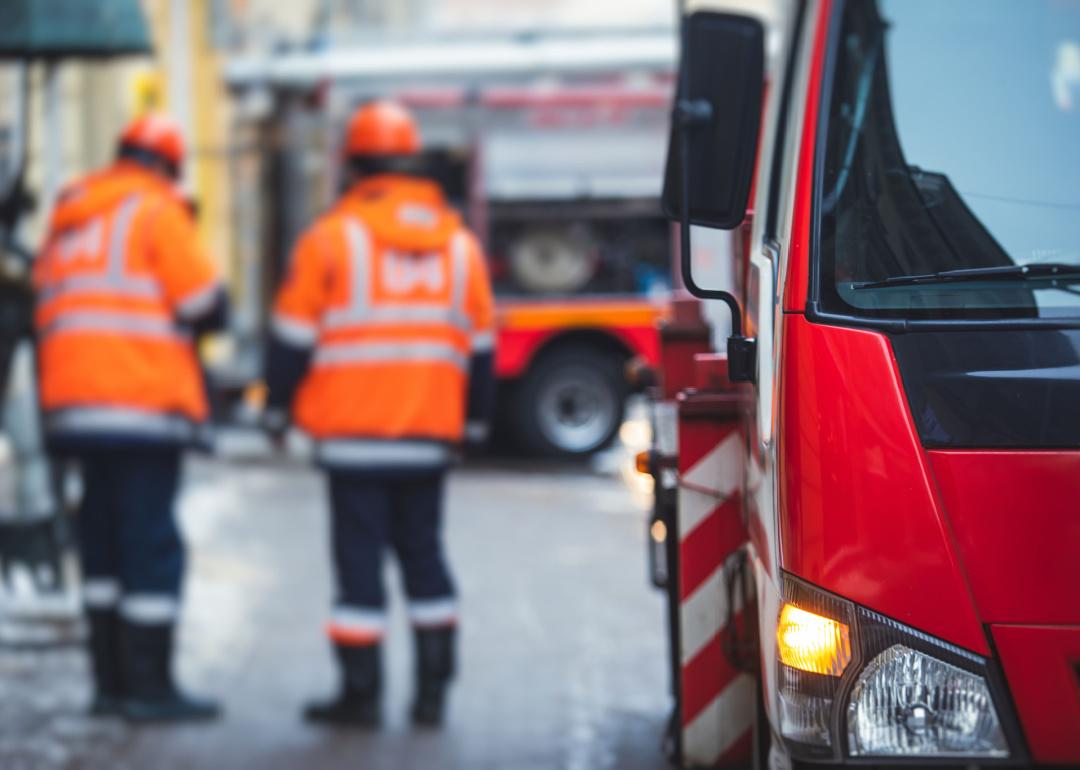
Tsuguliev // Shutterstock
Emergency response
Firefighters with fire truck in foreground
Law enforcement officers are called upon daily to respond to a wide range of emergencies that are often dangerous, difficult to manage, and tough to practice for. But virtual reality presents law enforcement agencies with a way to try to simulate those situations.
The Pulaski County Sheriff’s Office in Arkansas, for instance, used VR to train officers in de-escalation, as the technology offers unlimited practice opportunities. For example, one officer may practice responding to a mental health emergency in a hospital, while another officer practices responding to an individual who is intoxicated in public.
The Emergency Response Training and Certification Association, a nonprofit organization in Pennsylvania, reports this immersive training helps improve communication, decision-making, equipment skills, and physical skills.
In 2022, the Public Safety Immersive Test Center opened in Boulder, Colorado, to provide free VR training for first responders. Simulations range from adverse weather conditions to active shooter events; in one scenario, firefighters use VR headsets to create the visual of a room on fire while they move around a safe physical space to practice finding victims who are trapped.
This story originally appeared on Tovuti LMS and was produced and
distributed in partnership with Stacker Studio.